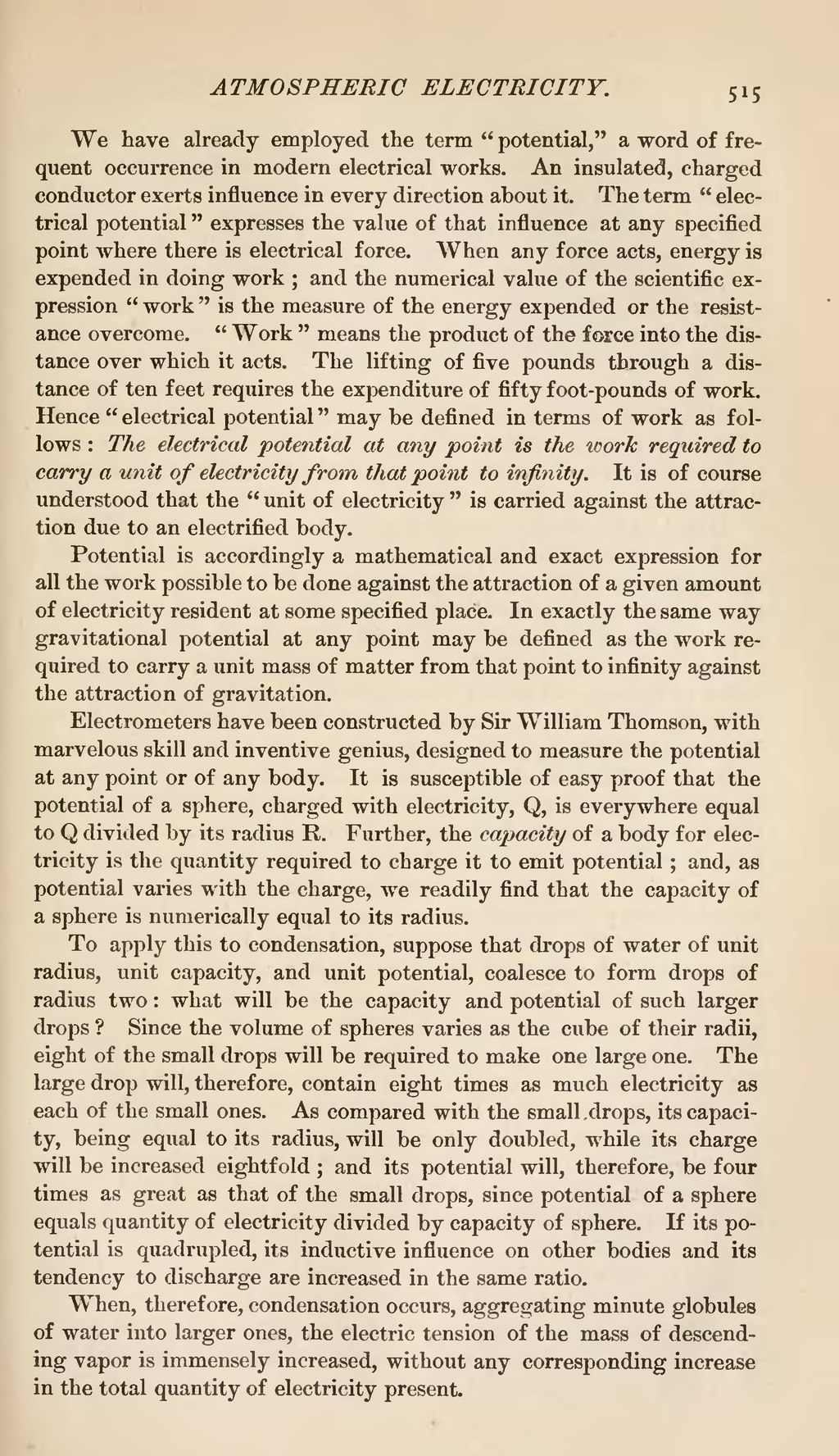We have already employed the term "potential," a word of frequent occurrence in modern electrical works. An insulated, charged conductor exerts influence in every direction about it. The term "electrical potential" expresses the value of that influence at any specified point where there is electrical force. When any force acts, energy is expended in doing work; and the numerical value of the scientific expression "work" is the measure of the energy expended or the resistance overcome. "Work" means the product of the force into the distance over which it acts. The lifting of five pounds through a distance of ten feet requires the expenditure of fifty foot-pounds of work. Hence "electrical potential" may be defined in terms of work as follows: The electrical potential at any point is the work required to carry a unit of electricity from that point to infinity. It is of course understood that the "unit of electricity" is carried against the attraction due to an electrified body.
Potential is accordingly a mathematical and exact expression for all the work possible to be done against the attraction of a given amount of electricity resident at some specified place. In exactly the same way gravitational potential at any point may be defined as the work required to carry a unit mass of matter from that point to infinity against the attraction of gravitation.
Electrometers have been constructed by Sir William Thomson, with marvelous skill and inventive genius, designed to measure the potential at any point or of any body. It is susceptible of easy proof that the potential of a sphere, charged with electricity, Q, is everywhere equal to Q divided by its radius R. Further, the capacity of a body for electricity is the quantity required to charge it to emit potential; and, as potential varies with the charge, we readily find that the capacity of a sphere is numerically equal to its radius.
To apply this to condensation, suppose that drops of water of unit radius, unit capacity, and unit potential, coalesce to form drops of radius two: what will be the capacity and potential of such larger drops? Since the volume of spheres varies as the cube of their radii, eight of the small drops will be required to make one large one. The large drop will, therefore, contain eight times as much electricity as each of the small ones. As compared with the small, drops, its capacity, being equal to its radius, will be only doubled, while its charge will be increased eightfold; and its potential will, therefore, be four times as great as that of the small drops, since potential of a sphere equals quantity of electricity divided by capacity of sphere. If its potential is quadrupled, its inductive influence on other bodies and its tendency to discharge are increased in the same ratio.
When, therefore, condensation occurs, aggregating minute globules of water into larger ones, the electric tension of the mass of descending vapor is immensely increased, without any corresponding increase in the total quantity of electricity present.
